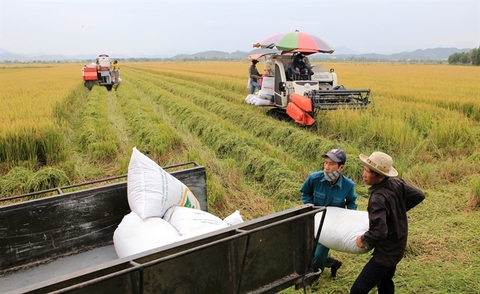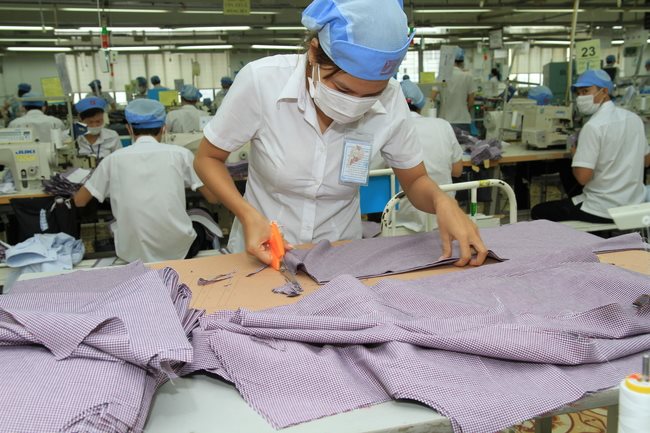Consumers enjoy some fruits of US-China trade spat
Consumers enjoy some fruits of US-China trade spat
Huong Quynh does not spare a second glance at the American cherries on supermarket shelves when she goes shopping.
The 38-year-old accountant in Hanoi knows the fruit is too expensive for her pockets. She has to feed a family of four.
In recent weeks, however, she has taken to stopping at the cherries counter and the red and juicy fruit has put in a regular appearance on her dining table.
"U.S. cherry prices have dropped recently, so I’ve tried to buy as much as I can for my two sons who love the fruit. We’ve eaten four kilograms so far this month."
Quynh’s family is among an increasing number of Vietnamese consumers who have been enjoying lower priced American fruits in the last couple of months as the trade war between the U.S. and China intensifies, pushing American farmers to look for new markets.
The tit-for-tat tariff imposition by the world’s two largest economies has seen cherry exports from the state of Washington, the largest cherry producer in the U.S., to China fall by half last year from 2017, according to local government figures.
China earlier this month announced a halt in the purchase of U.S. agriculture products.
The trade tensions have resulted in American exporters looking for new buyers, and Vietnamese fruit importers are among them. Imports from the U.S. in the first half of this year rose 19 percent year-on-year to $6.9 billion, with vegetables and fruits value rising by 70 percent, reaching over $116 million, according to Vietnam Customs.
As of July 18, 800 tons of cherry have been imported to Ho Chi Minh City this year, according to the city’s customs department. American cherry accounted for 44 percent of the volume, worth $2.8 million.
In Hanoi and HCMC, U.S. cherry prices this month have fallen by almost half from the same time last year to VND200,000-350,000 ($8.6-15.6).
Hoa, a cherry importer in HCMC’s Binh Thanh District, said that she has sold 1.5 tons of cherry in just over a week as demand is high. "I’ve never seen cherry prices drop this low."
Other fruits have also poured in. Red apples, grapes and blueberries from the U.S. are also being advertised popularly on social media with discounts for customers who buy in large quantities.
A perception among Vietnamese consumers that quality of fruits from the U.S. is more reliable has also boosted consumption.
"There are cherries imported from China, but they are smaller and sourer, so I pay twice as much for American cherries which have much better quality," said Thuy Anh, a stay-at-home mother in Hanoi’s Long Bien District.
More imported fruits from other countries are expected to pour into Vietnam soon thanks to trade agreements signed by the country.
Australia’s Horticulture Innovation, a rural research and development corporation, plans to double its orange exports to Vietnam from last year to almost 4,700 tons this year as import tariffs decrease.
Vietnam started importing Australian oranges at the end of 2015 with an import tariff of 10 percent, which has fallen to 3 percent now and will fall further to zero percent next year.
The Ministry of Agriculture and Rural Development has forecast that import of foreign fruits will continue to rise as tariffs fall under trade agreement commitments.
The Comprehensive and Progressive Agreement for Trans-Pacific Partnership (CPTPP) came into effect in January, while the EU-Vietnam Free Trade Agreement (EVFTA), which was signed in Hanoi in June, is expected to be submitted to the European Parliament for consent later this year.
Nguyen Dinh Muoi, deputy CEO of fruit export company Vina T&T Group, said that the influx of American fruits is happening as Vietnam seeks to export more fruits to the U.S.
Imported fruit of high quality will raise the bar for Vietnamese fruit sellers who often sell their goods at low prices to reduce inventory, he added.
Vietnam’s fruits and vegetables imports in the first half of this year rose 35 percent year-on-year to $991 million, with Thailand, China, the U.S., Australia and Myanmar the top markets, according to the Ministry of Agriculture and Rural Development.
However, experts are concerned that high fruit imports might hurt the local industry. Economist Le Dang Doanh said that Vietnamese farmers, with low technology application, will find it difficult to produce high quality fruit at competitive prices, while the rising income of consumers prompts them to look for better products from foreign countries.
Quynh is among the consumers who plan to take further advantage of the lower prices of foreign fruit.
"I’ll buy some more cherries before the season ends."
















